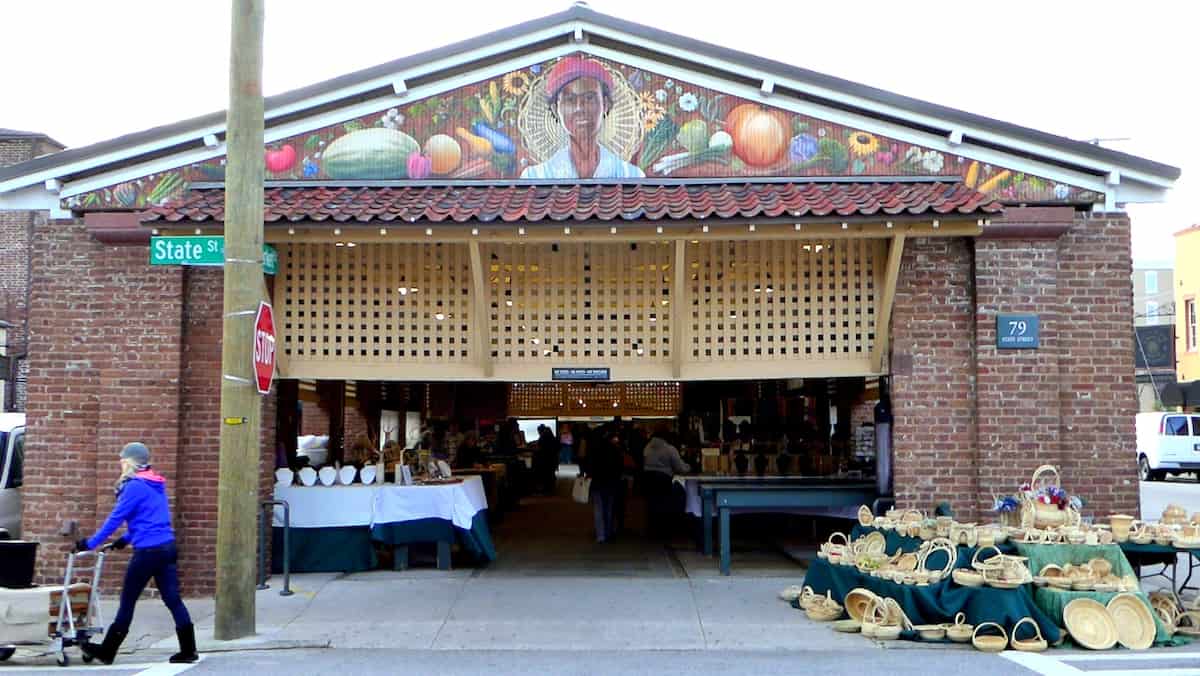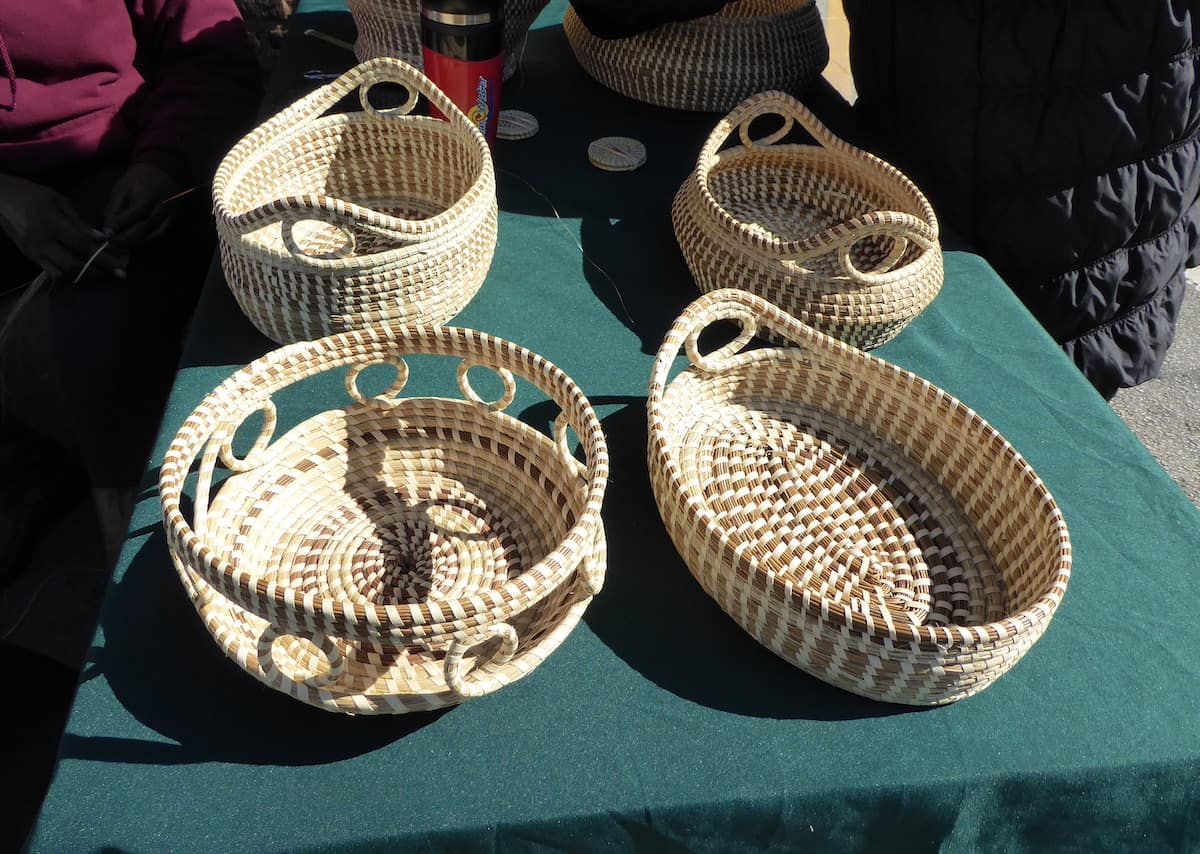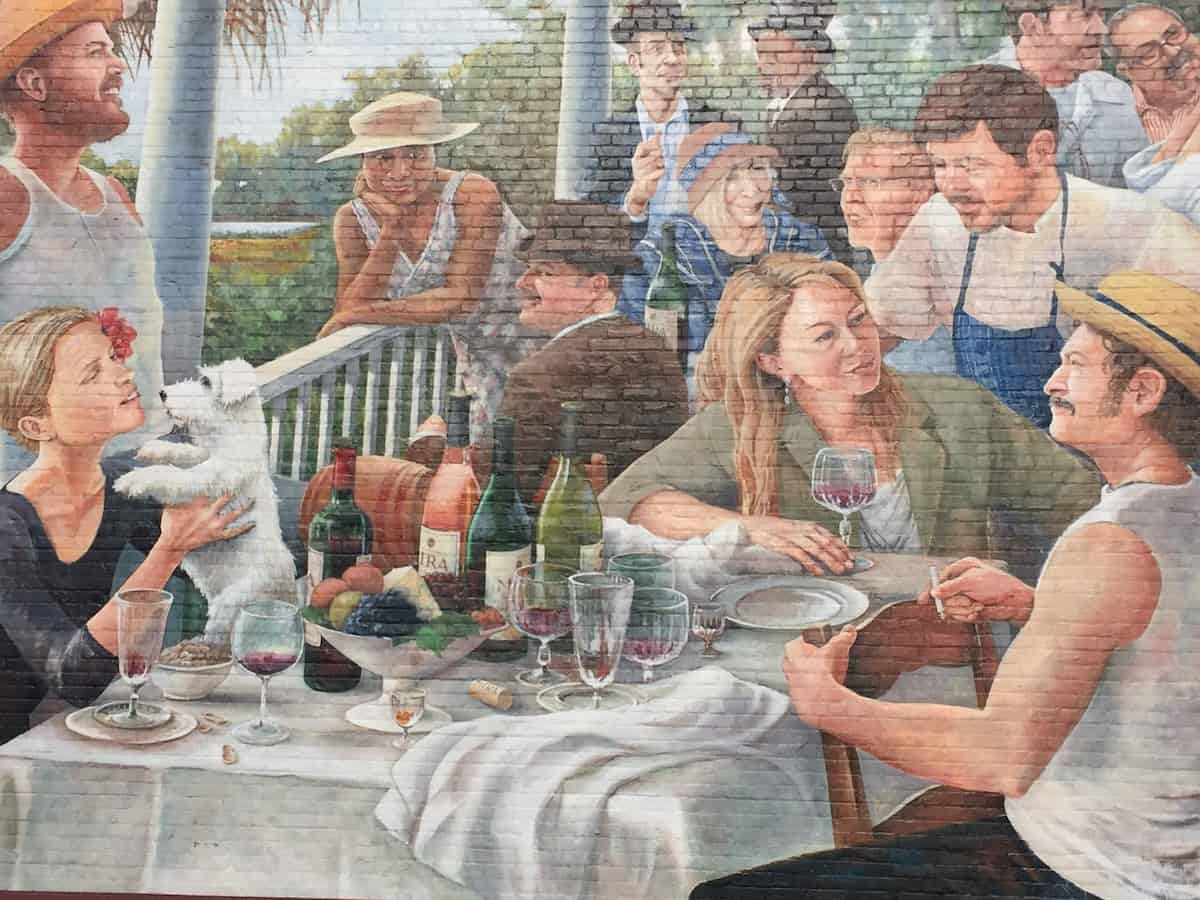The Cuisine of Charleston: A Unique Mix of History And Geography
The cuisine of Charleston is built upon a singular mix of geography, terroir and tradition.

The cuisine of Charleston reflects such a distinct mélange of ingredients and traditions that visitors from other regions of the U.S. may feel as if they’ve arrived upon a foreign shore.
This is the land where menus are populated with regional favorites, such as she-crab soup, Charleston red rice, shrimp and grits, fried green tomatoes, pickled okra, Hoppin’ John, benne wafers, and coconut cake, are luring food lovers from around the world.
Last year, more than 4.5 million people visited Charleston, the oldest and second-largest city in South Carolina. Founded by English colonists more than 300 years ago, the luster of the “Holy City” (nicknamed for the numerous church steeples that dominate its otherwise low skyline) hasn’t faded.

Despite having been ravaged by the Civil War in 1861, a 7.3 earthquake in 1886, and Hurricane Hugo in 1989, Charleston has not only persevered but has also thrived. Charleston has consistently topped the lists of U.S. cities in terms of economic development and tourism. Conde Nast Traveler named it the best small city in the U.S. for the 10th consecutive year.
Located on a scenic peninsula at the confluence of the Ashley and Cooper Rivers and surrounded by sea islands, the downtown historic area is relatively flat, laid out in a simple grid. Ironically, because the city didn’t have the financial wherewithal to rebuild or remodel structures devastated by the war, Charleston displays a remarkably intact and varied architectural history with more than 3500 well-preserved buildings. In fact, the nation’s first historical preservation zoning ordinance was passed in Charleston.

The city’s culinary renaissance
Experts mark the late 1970s as the turning point for the ascent of Charleston as a food mecca. In 1977, the city was chosen to host the U.S. version of the Spoleto Festival for the performing arts (named after the city in Italy). With an influx of sophisticated guests arriving for 17 days each spring, restaurants ramped up their efforts to cater to Europeans and other visitors, says Erin Perkins, editor of the online publication Eater Charleston.
Of course, Charleston was already well poised to create a culinary stir on the basis of its singular mix of geography, terroir, and traditions.
“Charleston is surrounded by fertile fields, vibrant forests, and thriving estuaries that serve as fish and shellfish incubators as well as by a massively stocked ocean,” explains Eve Felder, an executive chef and Charleston native, who is managing director of the Singapore campus of the Culinary Institute of America.
“In addition to the abundance of ingredients, the city’s food heritage also derives from the varied cultural influences of its citizens: people of African descent, the French Huguenots, and the English aristocracy,” she says.


any dishes reflect Charleston’s Lowcountry history and coastal location, too. “This unique cuisine is based on the abundance of products brought by African slaves (such as okra, eggplant, sesame and their knowledge of rice cultivation), and the indigenous foods of the region (e.g. creek shrimp, blue crabs, wild tuna, flounder and bass; marsh hens, wild ducks, geese, turkey, quail, and deer; and scuppernong grapes and wild mushrooms),” says Felder. Some of the region’s best vegetables are grown in nearby barrier islands like Wadmalaw and Edisto, she adds.


The roots of Southern cooking run deep in Charleston, says Perkins of Eater Charleston. She notes that the 1984 opening of a Johnson & Wales campus in the city (offering programs in food service, hospitality, and travel tourism) also inspired a cadre of talented and committed culinary professionals. Although the campus was consolidated with the one in Charlotte, North Carolina some twenty years later, many graduates remained here and in other parts of the South, reinterpreting the fried chicken and pickled vegetable recipes handed down generations ago.
Tips for Tasting Charleston: Lead with your nose
The diverse neighborhoods within downtown Charleston are eminently walkable (There’s also a free trolley system). Wherever you go, you’re likely to find a restaurant, bar, cafe, market or bakery with local flavor and extremely friendly and solicitous wait staff. Precious few are part of national chains.
“Stay downtown and roam her streets and follow your nose,” says Felder. “Get an early morning start and explore the alleys, cobblestone streets, nooks and crannies and let Charleston embrace you with her magic.”

Depending on your budget and the time you have available, here are some options for the first-timer:
Take a tasting tour
A number of companies offer tasting tours of the city. For example, Charleston Strolls features 2½-hour Savor the Flavors tours by licensed guides that allow participants to taste specialties such as stone ground grits, benne wafers, locally made gourmet chocolates, southern pralines, sweet tea, collard greens and Lowcountry barbeque.

Attend a food festival
Many tourists plan their visit around one of the annual festivals that showcase Charleston’s culinary treasures. These include Taste of Charleston (September), The Lowcountry Oyster Festival (January), and the 5-day BB&T Charleston Wine + Food Festival (March), with over 160 participating chefs from Charleston and across the country. Apropos of the pandemic, some of these festivals have been on hiatus. In 2022, the Charleston Wine & Food Festival is scheduled to be held from March 3-6.

Visit the city market
The Charleston City Market, one of the oldest public markets in the country, occupies a series of sheds from Meeting Street to the Cooper River. Originally erected in 1804, it once sold meat, fish and vegetables. The complex has seen its share of adversity, too—destroyed by fire in 1838 and damaged by tornadoes nearly a century later. In 1973, it was placed on the National Register of Historic Places, and received a $5.5 million makeover in 2010.



The market is home to 285 local vendors selling local jams and fruit preserves, pickled and dried foods, candies, boiled peanuts, crafts, and other quintessential Lowcountry souvenirs. Artists of African origin make and sell hand-woven sweetgrass baskets, used during colonial times to separate rice seed from its chaff.
Rely on the advice of local experts

Restaurant menus are built on local, seasonal ingredients that reflect the city’s “sense of place.” Be sure to taste characteristic foods and products of the region and sample dishes that have brought national acclaim to the city’s long list of award-winning chefs.
The experts at Eater Charleston maintain an updated list (with reviews) of essential restaurants (not-to-be-missed classics), oldest restaurants (noteworthy for their longevity, and “hot” restaurants (that are popular at the moment).
The dilemma for any food enthusiast visiting Charleston for the first time will likely be one of over-choice rather than overpromise.
IF YOU GO
Some prior posts about the cuisine of Charleston on More Time To Travel:
- Charleston snacks: To satisfy and sweet or salty tooth
- The tastes of Charleston
- Carolina Cider Company: Halfway between Charleston and Savannah
[First published in the Sunday Travel Section of the Chicago Tribune on May 17, 2015, this article was substantially updated in December 2021.)






I’ll be in Charleston in October. I really enjoyed reading your post; it gave me lots of ideas for my own visit!
That should be a lovely time of year, too!
What a wonderful and complete account of this city – I must go back. I have only been there once, but now you’ve convinced me I need to return!
We are so happy to have been invited to a destination wedding in Charleston that will give us an excuse to return!
Here I am sitting in wintery WA quite happy with my lot until I click across to your post about Charlston. How much I’d like to be on the horse drawn carriage experiencing all that lovely cuisine, the colourful sights and cobblestone roads 🙂
Okra, grits, and collard greens are not that high on my culinary wish list. But I’m sure I could find something to garnish the barbeque. I also remember the first time ordering iced tea in the South. Tea flavored sugar is what came. I guess I’m going to have to expand my food horizons a bit.
I think I would like Charleston! I would start with the Mac Attack and the ribs at JBs, and then check out the Charleston City Market and the basket lady’s stuff!
One of my favorite cities in the U.S. and a wonderful place to explore the amazing restaurants that make up Charleston!
Never realized that Charleston is so well known for its food. The U.S. isn’t on my travel list, but you never know.
I remember your previous peeks at the cuisine of Charleston and thinking, how is it that we’ve yet to visit? I can see that eating one’s way through Charleston would be an enjoyable challenge, particularly with all the seafood.
I would love to visit Charleston some day. The food choices sound wonderful. I like the idea of following my nose.
It’s definitely one of my favorite American cities and yes the food there is spectacular! Irene, if I go can you hook me up? Please do share this on my link up for Travel Photo Mondays, love to have you join us today!
Looks like you’d have to book at least a week to get a through all the culinary tastes of Charleston. So many wonderful choices it would be difficult to get through it in a few days. I guess we’ll need to put Charleston on our must-eat list.
I am ready to eat my way through Charleston! I’d also like to visit that City Market. Sounds like a tasty town.
Lovely place…
Charlestown’s cuisine looks very tempting! I was only there once and too briefly – I need to go back. I have some friends who are retiring in that area and I’m starting to wonder about whether I should reconsider Marco Island as my “final resting place”!
Our friends “semi-retired” to Charleston and that’s who we went to visit. They absolutely love it there. They live on Johns Island.
We absolutely love Charleston, not only for the cuisine, but the cityscape is incredible too.
Agree! The water views of Charleston Harbor are smashing!
Have never been to Charleston, but it is certainly on our list to visit. Great post- makes me want to go even more!
Irene, all your posts about Charleston have me wanting to go and spend some time in the area. Charleston cuisine looks tempting to me!
Thanks for reminding us of the wonderful meals we had in Charleston in years past. We lived in Hilton Head Island for a dozen years and regularly drove up to Charleston for a weekend of southern charm and southern food.
One of the nice things about the foods of Charleston is the rapidly changing and expanding restaurant scene! While I’m sure you would find many of your old favorites, there also will be new tastes!
Charleston is indeed rich in historic places. I will definitely bring my parents and kids to this place. Thanks for sharing!
I love the mural on the City Market.
The same artist has several murals around town. I love this one, too!
How have I passed by Charleston when visiting family in South Carolina. I’ve been wanting to see the architecture and neighborhoods, and now I have a culinary target, too.
Having family in South Carolina is such a great excuse to visit Charleston! Hope you seize the opportunity~
Charlestons sounds so charming! I’ve always wanted to go. Great article.
I love your Charleston food posts! I want to go there for the culinary experience.
We only had a few days in Charleston, but I really loved the history, architecture and the amazing food. I’m sure we’ll be back!
I’ve been wanting to visit that part of the US for a long time, but I didn’t realise the food was so interesting. Even more reason for me to go!
Hope your travels bring you to Charleston! I think you’ll love it~
Lovely to hear about a city from another ‘walker.’ I love food tours and taking the time to stroll neighborhoods. I hope to explore this area one day.
Charleston is eminently walkable! So much beauty all around~
I didn’t realise Charleston was a food city either. You’ve now got my taste buds salivating and wanting to try some of the dishes you pictured! Hopefully one day I’ll make it there!
Yes, it’s definitely a food-centric city with many great dishes, chefs and dining establishments!
I loved that mural introducing you to the Market, you’ve captured it beautifully. We had such a nice visit there last year to celebrate my birthday, I can see why it’s such a popular destination. It’s a great spot to walk and take in all the history.
I went crazy over the mural over the market, too!
Charleston is one of my favorite places to visit in the U.S. It’s such a great walking city, filled with history and great architecture, unique eateries, and of course the City Market. You really nailed the best places to go and eat!
We’ve had a hankering to visit the Carolinas one day. (We write occasionally for AAA Carolinas GO magazine.) Seafood and southern pralines could be just the lure to get us there :-).
Long trip for you, Janice, so I would tie it to a visit to Savannah, another great city in the American South.